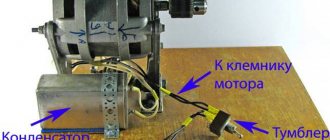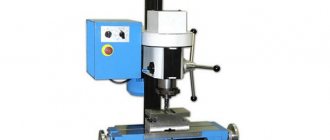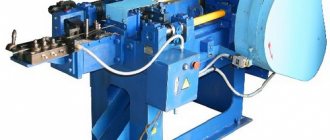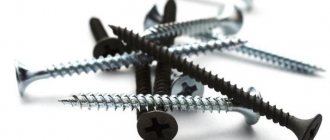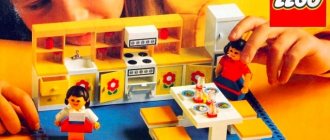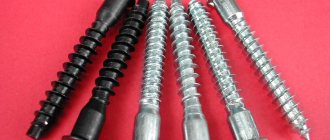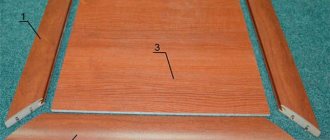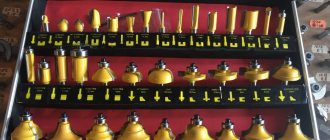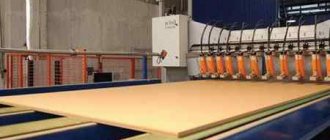A drilling and filler machine is equipment for wood processing , with the help of which holes are drilled in through-type or blind-type workpieces. It is most often used in the production of various pieces of cabinet furniture, including furniture for the kitchen, bathrooms or cabinets.
These machines must ensure high precision of work, since it is necessary to make many holes with an exact location in relation to each other; defects are not allowed in such work.
A modern furniture additive machine is not only highly accurate, but also a multifunctional device that can operate in automatic mode uninterruptedly and requires almost no intervention from you. Today we will talk about the features of such machines.
Drilling and filler machines and their task
Once upon a time, wooden parts of furniture structures were fastened together with tenon joints, and holes were created using a hand drill or brace. When slab elements , the need arose for more holes to connect furniture elements. It was impossible to make such a quantity manually, which is why the concept of a “squat card” appeared in the mass production of furniture.
Squatting meant connecting parts to each other. Nowadays, this is the name for holes created by the drilling method. And by squat map we mean a drawing of the placement of points that will need to be drilled.
Drilling and attachment equipment has the following functions:
- taking accurate measurements;
- making holes that will be connected through wooden elements.
Easy to make additive
Discussion
- Can drills be replaced with edge routers? There will be revolutions like an additive machine +/-. The machine turned out to be interesting, well done!
- The device is very good, but I wanted to ask: are the drills clamped normally from the additive, since they have a beveled edge?
- Yes they clamp normally. The beveled part needs to get between the clamping jaws of the drill chuck. There are three legs in the chuck and the beveled part of the drill base must be placed between two adjacent legs. And in the same way, I take a couple of filler drills with me for installation and clamp them into a screwdriver if I need to move the fasteners on site.
- There is a drawing, but it is not detailed. There the emphasis was more on the amount of material and the approximate appearance. And there is no assembly drawing with markings of mounting holes, etc. This was done on the fly.
Types of filler machines
In the industrial production of furniture, the first machines were single-piece drilling and filler machines. They were single-spindle and made one hole; over time they fell out of popularity. And the reason for this is that the squat map contains many points for making holes , which is why all currently existing models of such machines are multi-spindle.
The first models of machines of this type had the following basis:
- bed and table;
- a welded frame on which the spindles will be placed.
When the electric motor started, the machine began to work, while the frame was lowered, and the spindles made holes. In those years, there was no mass production of such equipment in the Soviet Union; each furniture factory produced them independently. However, the process was extremely lengthy, and it was necessary to make a separate machine for each part.
Over a period of time, such machines ceased to be used in the production of furniture; instead, multi-spindle designs began to be used for various parts.
Present tense
In recent years, furniture companies have begun to actively switch to multi-spindle machines equipped with a drilling head. It is needed to create the required number of holes used for installing drills. These holes are spaced 1.5 inches apart. The head moves thanks to an electric motor , which is used in conjunction with such gears as:
- chain;
- gear;
- belt
But you need to take into account that the service life of belt drives is not very long, and accordingly, they will need to be changed frequently.
But the use of chain drives creates a lot of noise during operation. Therefore, furniture manufacturers predominantly choose gear drives, in which torque is transmitted from one spindle to the next. This rotation is ensured by right and left drills.
Machines used for individual furniture production are equipped with one spindle head, which is located in a vertical or horizontal plane. The exact placement depends on the hole being created.
Multi-spindle designs equipped with a single head are usually used to create the following holes:
- horizontal;
- vertical.
Naturally, you can create them all together, but this will require displacement of the parts, which can subsequently disrupt the geometry during drilling .
More attractive are the half machines, which are practical and more functional. Their key feature is the presence of a horizontal side drilling head, as well as two vertical ones at the bottom. Other advantages of such designs include the following:
- they are more convenient to use compared to drilling heads;
- you can make accessory holes in 3-4 steps;
- Well suited for individual use.
The design of automatic drilling and filler machines includes rotating heads, thanks to which it is possible to make holes that can be of different sizes and have complex fill patterns. They can be used in serial production of furniture. Among their disadvantages is the lengthy setup. For example, when you need to make parts of a non-standard size, it will take a whole day to calibrate the machine.
For companies that produce custom-made furniture, it is best to choose machines with longitudinal feed. Their advantages are as follows:
- easy setup;
- there are called heads.
Processing one part will take about 2 minutes, but for large manufacturers this is a lot.
The most expensive equipment of this type is with cross feed. The high cost is due to the high efficiency. If you need to create holes in a part, you can use one specific drill.
Features of manufacturing a frame facade
We do the nuances of making a high-quality furniture jig with our own hands.
To make a frame facade, a series of sequential actions are performed.
- Vertical and horizontal slats are sawed with some margin, so that later on an angle machine you can make cuts at an angle of 45°.
- When cutting out the final size, the exact size of the frame is maintained.
- Using a manual filler machine, holes are prepared for the final assembly of the facade.
- The chipboard core is cut out on a format-cutting machine (glass is cut to size on a glass cutting table and a reinforcing film is glued onto it).
- The work of assembling the facade is carried out on the table. To ensure that right angles are assembled, a jig is made. In it, the guides converge at an angle of 90°.
- Connect one pair of profiles, check the angle. It should be exactly 90°. Before assembly, the dowels are lubricated with polymer glue.
- Connect the second pair of profiles.
- Glue is applied to the edges of the filler, and then the filler is inserted into the first assembled corner.
- A second corner is mounted on the reverse side, and dowels coated with glue are first installed in it.
- With light blows of the mallet, the entire frame is finally assembled.
- The finished façade is put out to dry. Typically, polymer adhesives are completely polymerized within 24 hours.
The corner from the profile is assembled onto two dowels, as in the photo below. For them you need to drill two holes on the mating surfaces. For this you need an additive machine.
Characteristics of well-known models of drilling and filler machines
Below we will present reviews of the most popular models of such machines among furniture makers, so that you can make the right choice.
Characteristics of the Vitap ALFA 21 Classic model
This model is made in Italy and includes a large number of different functions. In particular, these are horizontal and through drilling. The machine is equipped with a drilling head and a spindle (its size is 21). It can process workpieces with dimensions of 80 by 30 cm, and when drilling, the hole can have a depth of up to 7 cm. The machine has a 2 kW electric motor.
Additional features include:
- you can change the depth and height of the drilling head (there are 8 positions);
- You can change the drilling speed.
The cost of equipment is from 5500 USD.
Description of the Griggio brand machine
This machine, like the previous one, is also produced in Italy and is one of the leaders in the market of drilling and filler structures. This brand produces models for both individual and industrial use. To use it as intended, you will need to additionally purchase a lubricator .
One of the popular models of this brand is GF 21, which is used to make holes in the fittings of various furniture designs. It is equipped with one drill head and spindle, as well as a tabletop measuring 90 by 38 cm. You can make a hole up to 8.5 cm deep, the weight of the structure is 302 kg, and the motor power is 1.5 kW.
Additional options:
- automatic adjustment of drilling depth;
- digital indicator for determining the thickness of the structure.
The cost of the equipment is 3200 USD. and higher.
A more advanced model of such a machine is the GF 2Z. Mainly in its technical characteristics it does not differ from the previous one. The number of spindles here is 23. In addition, the first spindle is located at a distance of 70.4 cm from the last. This will allow you to process larger parts.
Such equipment will cost 3600 USD.
Properties of drilling and attachment device MZ 7121
This model is manufactured in China , its advantages are:
- ensuring high accuracy of work;
- high performance;
- reliability;
- Possibility of application in large or small enterprises.
The characteristics are:
- there is one drilling head and spindle 21;
- there is a tabletop 125 by 120 cm;
- you can make holes up to 6 cm deep;
- the electric motor weighs 202 kg and has a power of 1.5 kW.
The minimum cost of the model is 2500 USD.
Model MZ 7121a is a modification of the previous one and has a longer service life .
Features of the Maggi Boring System 21 model
This equipment can make holes in accordance with the technological requirements for the production of furniture and accessories. It is equipped with a tabletop 78.5 by 37.5 cm. The maximum depth of the holes is 6.5 cm. The engine weighs 275 kg and has a power of 1.5 kW. Estimated cost - about 2500 USD.
Nowadays, it is difficult to imagine a small or large enterprise for the production of furniture without machines of this type. It is very important to choose the right equipment; it is often very difficult, since it is necessary to take into account the technical characteristics of the model, which directly affect the quality of work.
How to make it yourself
The disadvantages of small drilling mechanisms are practically invisible, because in this case there is no need to make many parts. And the simplest equipment can prepare precise and even holes, which allow you to make durable and high-quality furniture. Do-it-yourself furniture making machines have their advantages and disadvantages.
They are good because:
- The devices are easy to use;
- They have a simple design; you do not need special knowledge to operate and maintain them;
- You can make holes without obvious defects;
- If necessary, you can increase their productivity;
- Low cost;
- To install and operate the unit, you do not need a lot of space; a small part of the desktop is enough.
However, homemade machines also have disadvantages:
- During operation, only one cutting tool is used;
- Low performance;
- You cannot perform many operations; additional mechanisms are required to process different parts;
- No automation;
- It is not possible to enable different modes.
Photo enlarger as a machine
You can make a convenient homemade additive machine from an old household photo enlarger. Now this device is almost never used, for this reason its parts are often used for various homemade products.
The photo enlarger is used as the functional basis of the design. The most important thing is that it has a comfortable desktop, with a securely fastened vertical stand, which is equipped with a special mechanism. The casing is removed from the enlarger. Instead, an electric motor and a chuck for attaching the drill are attached. Most often, the motor is mounted on the enlarger carriage plate using clamps. You can use the motor from the mixer as an electric drive. For our purpose, its power is quite sufficient, it is small in size and is often equipped with a device for changing speeds. A chuck is attached to the motor axis, which can clamp drills up to 6 mm in diameter.
Such a machine for making furniture allows you to partially adjust it, changing the position of the vertical axis along which the chuck and the drill clamped in it move. And although it does not have the same characteristics as the factory models, it will cost almost nothing and will be able to perform simple tasks.
Making a machine from an electric drill
A homemade drilling machine can be made very quickly from a drill; you just need to select the appropriate parts. It is suitable for carpentry work; some craftsmen even connect CNC to it.
A piece of organic glass is prepared according to the required size; it will be needed for the manufacture of the base of the machine. Then stands and holes are made for the clamps that secure the engine. To make a productive machine, you will need a powerful electric drill. Using a drill makes it possible to abandon the search for a suitable cartridge.
But the most difficult thing in this design is to make a strong and reliable movable base. You can find a ready-made lifting table, or use a mobile support on which an electric drill is securely mounted. But a small problem appears - vibration, which will need to be eliminated.
The drill must be secured to the stand with mounting brackets. After this, you need to test the resulting design. We start the drill, switch it to the highest speed and make sure that there is no vibration; if there is any, you will need to strengthen the stand. After this, you can attach the lifting table.
Stages of equipment development and its types
Over the years of its existence, the drilling and additive machine has been constantly improved, becoming more productive and convenient to use. Any specialist will be interested to learn about the stages of development of this equipment. The first drilling and attachment devices were equipped with one spindle, which made them not very convenient and low-productive. Since such equipment required many holes to be drilled according to the filler pattern, the use of single-spindle models was not widespread.
The first drilling and additive unit with several spindles was a device consisting of a frame, a work table and a welded frame on which several drilling heads were rigidly fixed. This machine was specially designed for drilling holes in parts of the same type (the distance between its working heads could not be changed). Naturally, it takes a lot of time and money to develop the design of such a drilling and additive machine and its creation, which is a big disadvantage of this type of equipment. Currently, machines of this design are used in small furniture factories, where making them yourself is more economically feasible than purchasing expensive universal equipment.
Multi-spindle head of drilling and filler machine GF 35
At the end of the last century, drilling and additive devices were developed, the working body of which is a multi-spindle drilling head. The mounting holes for placing drills in it are located at a distance of 32 mm (1.5 inches) from each other. All drills installed in such a head rotate using one motor, which drives them through a belt, chain or gear drive. The preferred option is gear drives, which are more durable than belt drives and less noisy than chain drives. Since rotation is transmitted from one spindle to another using gears, both right-handed and left-handed drills are used on such machines.
In small industries and individual furniture workshops, machines equipped with one multi-spindle head located in a horizontal or vertical plane are used. Using such drilling and attachment machines, you can drill both vertical and horizontal holes in elements of furniture structures.
Interchangeable spindles can be quickly swapped to drill holes at different distances from each other
The drilling and additive machine, which is called the “half”, has wider capabilities. A design feature of this machine is that it is equipped with three drilling heads at once: one lateral and two vertical, located at the bottom of the work table. Drilling all the necessary holes on such a machine requires relocating the part, which can negatively affect the accuracy of their location, and the need to reconfigure the equipment reduces productivity. A drilling and attachment unit of this type is optimally suited for equipping small industries, as well as for those craftsmen who make furniture with their own hands.
GRIGGIO G55/3T with three drilling heads equipped with separate motors
At enterprises that produce furniture in large series, automatic drilling and additive equipment is used. Using such machines, even the most complex additive maps can be completed in one pass. The operation of these devices is controlled by a simple CNC system, and their working bodies are two horizontal drilling heads located on the right and left, and several vertical supports that are mounted at the bottom of the work table. The main disadvantages of such drilling and filler machines are the rather high price and the time it takes to reconfigure for processing parts of a different configuration. That is why the use of such devices is advisable only at enterprises that produce the same type of furniture in large series.
Automatic drilling and attachment machine Ostermann 2T, designed for large furniture production
A universal type of equipment that is optimally suited for equipping enterprises that produce custom-made furniture is a drilling and additive unit with longitudinal feed, controlled by a CNC system. A design feature of such machines, which, in fact, can be called machining centers, is that their drilling heads are equipped with retractable spindles, automatically called upon command from the control system. Despite their versatility and flexibility of settings, these machines do not demonstrate very high productivity, which does not allow their use in enterprises that produce furniture in large series.
The HIRZT F8 CNC drilling and additive machine can change the additive map without stopping, which is often required in small-scale production
